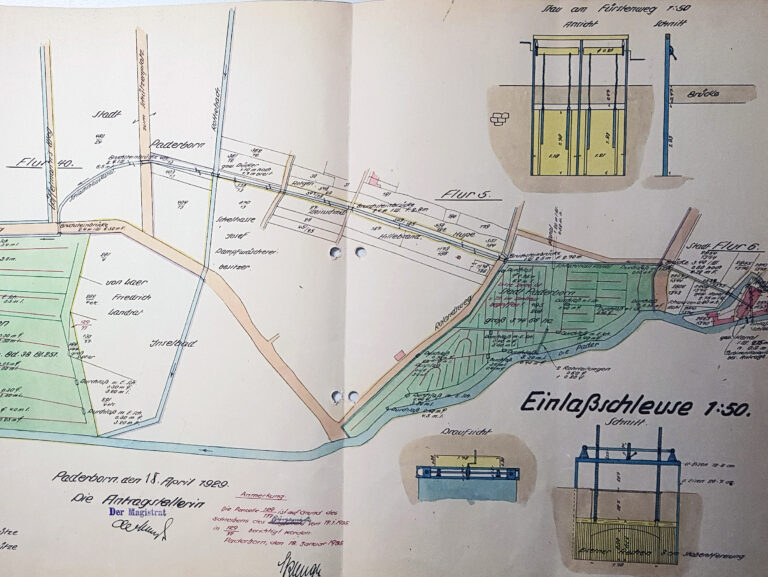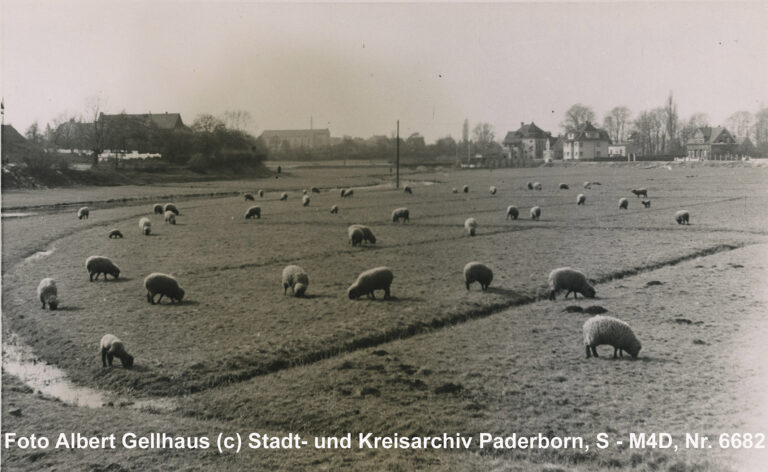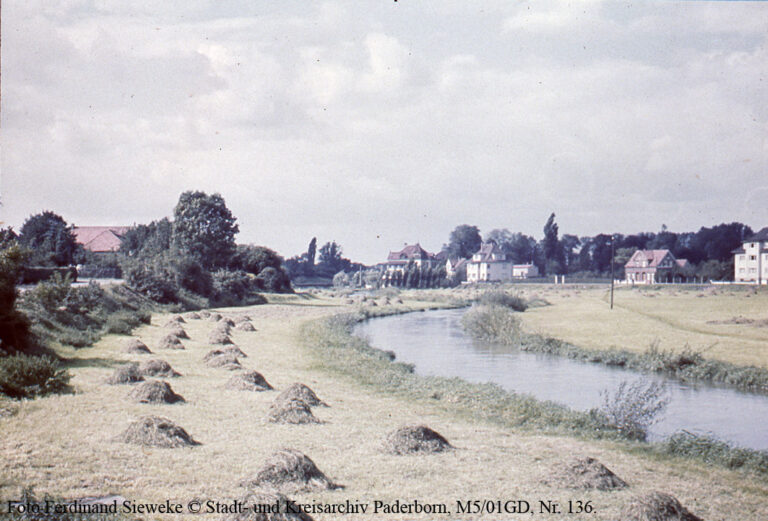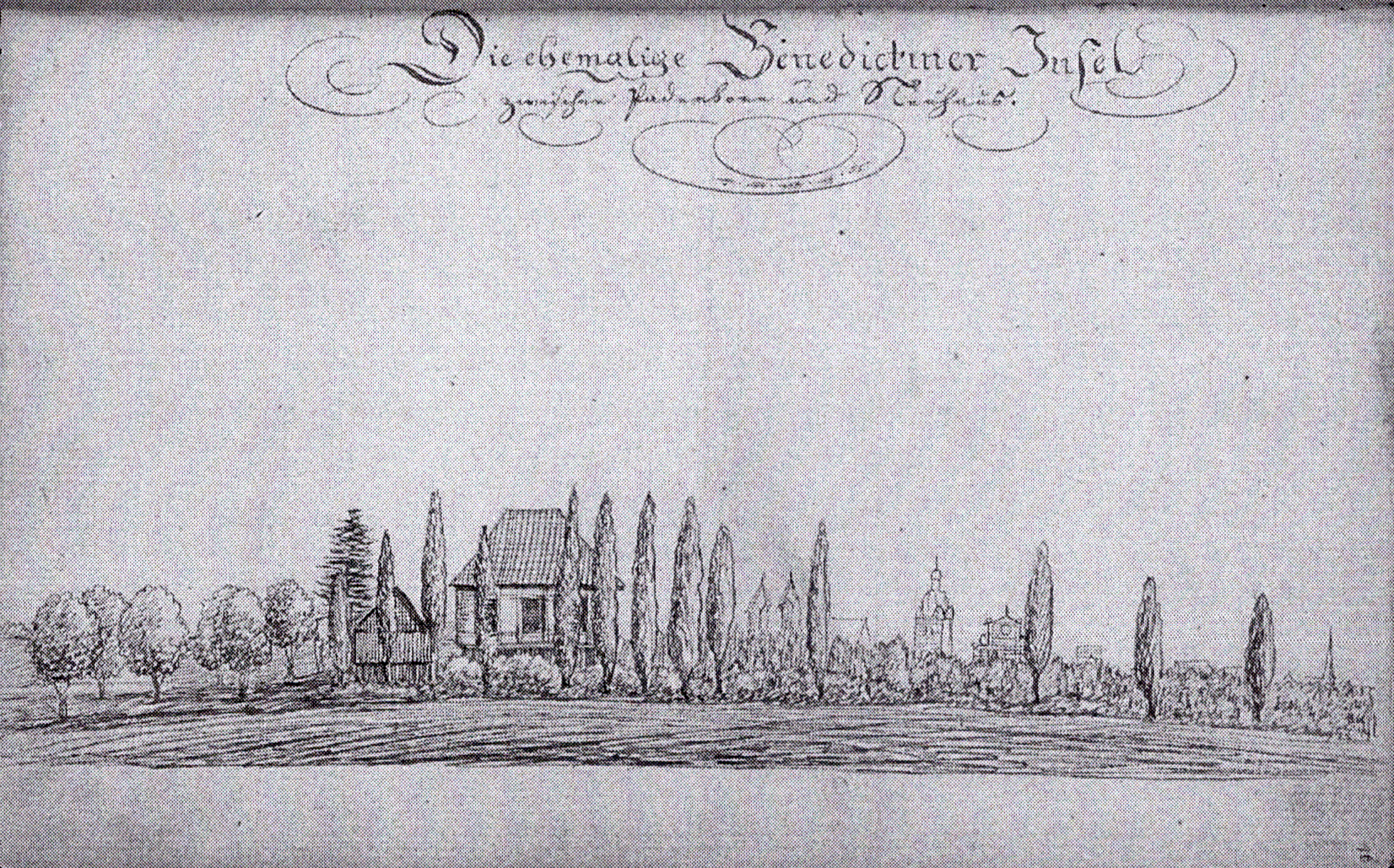[1] Quoted after Balzer, Untersuchungen, p. 97, Anm. 214.
[2] Cf. Feige, Wolfgang: Wiesenbewässerung an der Alme und in ihren Nebentälern, in: Heimatpflege in Westfalen 17/6 (2004), p. 1-6, here p. 1.
[3] An example of this is the request of the tenant of the fulling mill, Louis Gockel, of 30 January 1860. He blames the „wild“ rafting of some neighbours as one of the causes for the stated lack of water at his mill. Gockel complained that „arbitrary cuts were made in the banks, which deprived the Pader of an extraordinarily large amount of water to the detriment of the mills in a completely superfluous and useless way for the growth of the grasses“. The government should therefore „completely“ prohibit the landowners from rafting in this section. LA Detmold, Regierung Minden I U, Nr. 659, unfol.
[4] On the irrigation technique of the “ditch dam system” and “back irrigation” applied on the Pader, cf. Moritz, G.: Flößwiesen – Aufstieg und Niedergang, in: Naturschutz und Landschaftspflege in Paderborn, Issue Nr. 4 (1999), p. 2-16, here p. 3f.
[5] For example Gut Erpernburg: Familie von und zu Brenken, Gut Ringelsbruch: Graf v. Westphalen, Lichtenau: v. Oeynhausen.
[6] Cf. copy of the verdict with reasons of the „Generalkommission“ (general commission) of 28 October 1870, StadtA Pb, A 3323, fol. 164r-169v; here fol. 164r.
[7] Cf. copy of „Regulierungs-Vertrag zw. Rittergutsbesitzer v. Köppen u. Königliche Regierung in Minden“ (regulation contract between the owner of the knight’s estate von Köppen and the Royal Government in Minden) of 27 October 1873, LA Detmold, M1 III E, No. 151, unfolded. Among other things, landowner von Köppen had made his fortune from 1850 onwards through the construction of the Hamm-Kassel railway line. Friendly hint by Mr. Michael Pavlicic.
[8] Karl Hüser puts the monthly slaughter rate for 1887/88 at an average of 862 animals. Hüser: Von der Reichsgründung bis zum Ersten Weltkrieg (1871-1914), in: Hüser, Karl/Göttmann, Frank/Jarnut, Jörg (Eds.): Paderborn – Geschichte der Stadt in ihrer Region, Vol. 3: Das 19. und 20. Jahrhundert, Paderborn 1999, p. 101-161, here p. 112ff.
[9] Quoted after Hüser, Von der Reichsgründung, p. 112.
[10] Cf. in general Moritz, Flößwiesen, p. 4.













